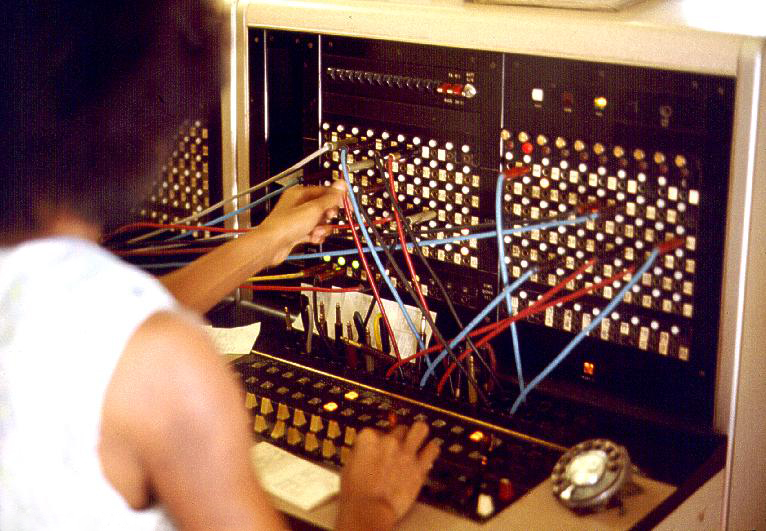In 1876, when Alexander Graham Bell spoke the famous words “Mr. Watson, come here, I want to see you” through his experimental telephone, he could hardly imagine that this simple request would launch a technological revolution spanning over 164 years. The transformation from Bell’s rudimentary device to today’s smartphones represents one of humanity’s most dramatic technological evolutions, fundamentally changing how families stay connected, businesses operate, and societies function.
This journey through telephone history reveals the remarkable progression of this humble device – from the first manual switchboards operated by young boys to the development of rotary dials, the introduction of touch-tone technology, and ultimately the emergence of powerful pocket computers we now call smartphones.
6. The Early Beginnings: 1856 – 1876

Antonio Meucci created the first working electromagnetic telephone in 1856, developing the device to connect his basement workshop with his wife’s second-floor bedroom due to her arthritis. During this pioneering period, inventors worldwide explored various methods of transmitting voice through electrical signals, with significant breakthroughs in understanding how sound waves could be converted to electrical impulses.
Meucci’s “teletrofono” laid important groundwork by establishing the basic principles of electromagnetic voice transmission, including the use of copper wire and basic transducers. The scientific community of the time actively shared research about acoustic telegraphy, leading to parallel developments in several countries as inventors sought to overcome the limitations of Morse code communication.
5. The First Patent: 1876

Alexander Graham Bell secured the first official telephone patent on March 7, 1876, marking a pivotal moment in communication history. Bell’s design introduced the liquid transmitter, which used a metal rod attached to a membrane that moved in response to sound waves, creating variations in electrical current through acidified water.
His successful test on March 10, 1876, transmitted clear speech between two rooms in his Boston laboratory, proving the viability of electrical voice transmission. The patent filing, numbered 174,465, detailed the specific methods of transmitting vocal sounds through undulating electrical currents, establishing the foundation for all future telephone development.
4. Commercialization Begins: 1877 – 1900

The Bell Telephone Company began its operations in 1877, installing the first commercial telephone exchange in New Haven, Connecticut. Early telephone networks required manual switching by operators, who connected calls by physically plugging wires into a switchboard matrix. The development of improved carbon microphones in 1886 dramatically enhanced voice clarity and transmission distance, allowing for practical long-distance communication.
Local telephone networks expanded rapidly in urban areas, with telephones in service growing from 3,000 in 1876 to over 800,000 by 1900, fundamentally changing how businesses and families communicated.
3. The Rise of Dial Phones: 1905 – 1960

The introduction of the rotary dial phone in 1905 revolutionized telephone technology by allowing users to connect calls without operator assistance. Engineers designed the rotary mechanism to generate specific electrical pulses that automatically routed calls through mechanical switches at telephone exchanges. The Model 500 telephone, introduced by Western Electric in 1949, became the standard home phone design for most Americans. It featured improved audio quality through enhanced carbon microphone technology and more durable plastics.
By 1960, direct-dial service reached most urban areas in America, supported by automated switching systems that could handle millions of calls daily. The development of touch-tone technology in the late 1950s marked another major advance. This technology used distinct audio frequencies instead of pulses to signal numbers, significantly speeding up the dialing process.
2. The Cordless Revolution: 1980 – 2000

Cordless telephone technology transformed home communications in the 1980s by freeing users from the constraints of fixed phone locations. Early cordless phones operated on 27 MHz frequencies, providing about 100 feet of range from their base stations. The introduction of 900 MHz technology in the late 1980s dramatically improved sound quality and extended range to nearly 1000 feet under optimal conditions.
Digital spread spectrum technology, introduced in the 1990s, enhanced security and clarity by encrypting conversations and reducing interference from other electronic devices. The development of 2.4 GHz and later 5.8 GHz cordless phones provided even greater range and sound quality while minimizing interference with other household wireless devices.
1. Modern Innovations: 2000 – 2020

The emergence of Voice over Internet Protocol (VoIP) technology in the early 2000s fundamentally changed telephone service by allowing voice transmission over the internet. Smartphone technology, pioneered by the iPhone in 2007, integrated traditional voice calling with internet connectivity, GPS navigation, and powerful mobile computing capabilities.
The development of 4G LTE networks enabled high-quality video calling and streaming services, making face-to-face communication as common as voice calls. Advanced features like visual voicemail, HD voice quality, and AI-powered virtual assistants transformed phones into essential tools for modern life while maintaining the core purpose of human connection that Alexander Graham Bell envisioned nearly 150 years ago.




























